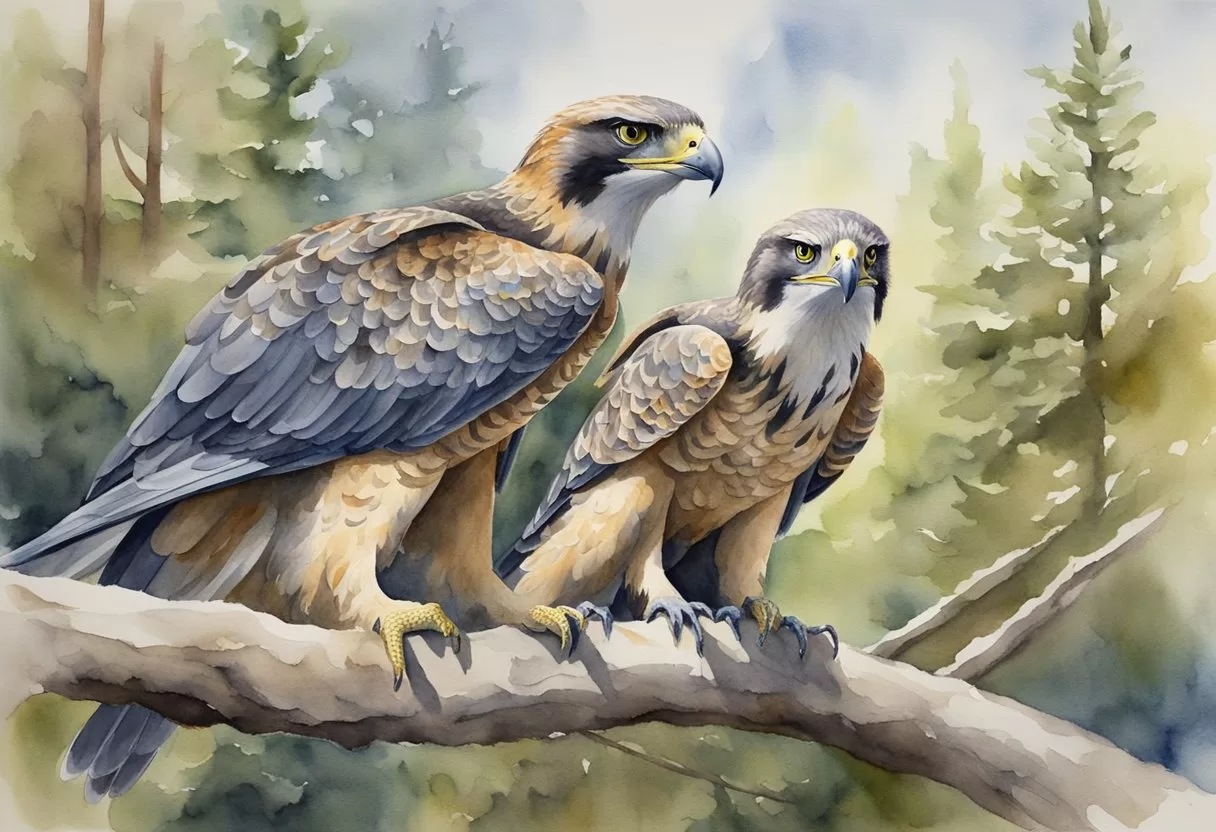Nest Defense Strategies of Raptors
Raptors employ a variety of nest defense strategies to protect their young from potential predators. These strategies range from physical adaptations to intricate behavioral responses, all tailored to enhance their survival.
Physical Defenses: Talons and Beaks
Raptors are equipped with powerful talons and sharp beaks that play a crucial role in nest defense. Talons, designed for grasping and tearing, can inflict significant damage on intruders. For instance, a hawk’s foot pressure can exceed that of other birds, making them formidable opponents against small mammals or other birds.
Their beaks, sharp and hooked, are effective for both feeding and defense. When a raptor senses a threat, it may employ its beak in aggressive displays. Eagles, for example, will not hesitate to strike at perceived threats, using their beaks to assert dominance and protect their young.
Behavioral Adaptations: Distraction and Mobbing
Behavioral adaptations are essential for raptors defending their nests. One common method is distraction displays, where a raptor feigns injury to lure predators away from its nest. This tactic effectively shifts attention, allowing the nestlings to remain undetected.
Mobbing behavior is another strategy observed in some raptor species. This occurs when a group of birds, including other raptors, join forces to harass potential threats. For instance, a pair of falcons may call and dive-bomb a larger predator, such as a crow, to drive it away from their nesting area. This teamwork significantly increases the chances of nest survival.
Camouflage and Nest Concealment
Camouflage is a vital defense mechanism that raptors utilize to protect their nests. Many species select nesting sites that blend into their surroundings, making it challenging for predators to spot them. For example, a nesting hawk may choose a location in a dense thicket where its coloration blends seamlessly with the environment.
Moreover, raptors assess nest visibility and may rearrange materials to enhance concealment. The degree of visibility can dictate how susceptible a nest is to predation. Effective concealment involves minimizing exposure, which is crucial for the survival of their young amidst various threats.
Factors Influencing Nest Predation

Nest predation poses significant risks to raptor populations, affecting their reproductive success and overall survival. Various factors contribute to predation risk, including the location of nests, the types of predators involved, and specific nesting habits.
Location and Predation Risk
The placement of a raptor’s nest greatly affects its vulnerability to predation. Nests situated in dense foliage may offer better concealment from both avian and mammalian predators. However, nests closer to the ground are more susceptible to ground-based predators such as foxes, cats, and dogs.
Key considerations:
- Clutch Size: Larger clutches may draw more attention from predators, as multiple eggs signal a potential food source.
- Nest Height: Elevated nests are often safer from terrestrial threats but might still face risks from birds of prey, particularly in open areas.
Predator Types and Defense Tactics
Raptors encounter various predator types, each requiring different defense mechanisms. Mammalian predators, like foxes and domestic dogs, tend to approach nests quietly, often relying on stealth. In contrast, avian predators may exhibit more aggressive tactics.
Raptors often deploy specific behaviors to deter these threats, including:
- Aggressive displays such as loud vocalizations or dive-bombing intruders.
- Altered nesting behaviors, such as relocating nests when identified by potential threats.
Nesting Habits and Reproductive Success
The reproductive success of raptors is intimately tied to their nesting habits. Ground-nesting birds particularly face heightened predation risk, as they lack the protective elevation of arboreal nests.
Important factors include:
- Timing of nesting: Early or late nesting windows may lead to varying predation pressures based on seasonal predator activity.
- Nest maintenance: Ensuring that nests remain inconspicuous can enhance nest survival rates, thereby increasing the chance of successful fledging.
Through these adaptations and considerations, raptors can better navigate the challenges posed by nest predation.
Conservation and Human Impact on Raptor Nesting
Human impact plays a significant role in the conservation of raptors and their nesting habits. Effective protective measures can enhance raptor breeding success, while various threats pose challenges to their survival.
Protective Measures and Raptor Conservation
Conservation efforts focus on various protective measures for raptor populations. Initiatives include the establishment of protected areas and the implementation of monitoring programs. These efforts aim to mitigate predation pressure from both natural predators and human activities.
Artificial nesting sites have proven beneficial for raptors such as the bald eagle and osprey. By providing secure locations, these platforms can improve breeding success. Additionally, habitat restoration projects help maintain ecological balance and support diverse bird populations, including species like the golden eagle and hen harrier.
Education and awareness campaigns are crucial in fostering positive attitudes toward raptors. Engaging local communities promotes responsible tourism that benefits conservation. By minimizing disturbance, raptors can thrive even in areas frequented by humans.
Threats: Habitat Loss, Poisoning, and Hunting
Various threats challenge raptor nesting success. Habitat loss due to urbanization and agricultural expansion significantly reduces available nesting sites. As woodlands and wetlands disappear, species like the marsh harrier and goshawk experience heightened predation pressure.
In addition to habitat loss, poisoning remains a critical concern. The use of pesticides impacts raptors indirectly by contaminating their prey. Shooting and trapping pose direct threats, leading to declines in populations of species like buzzards and Montagu’s harrier.
Tourism development has also been detrimental. Hotel infrastructure can encroach on nesting territories, disrupting breeding efforts. Conservation strategies must address these threats through effective policies and community involvement to ensure the survival of raptors in their natural habitats.
Share this content:

Post Comment
You must be logged in to post a comment.